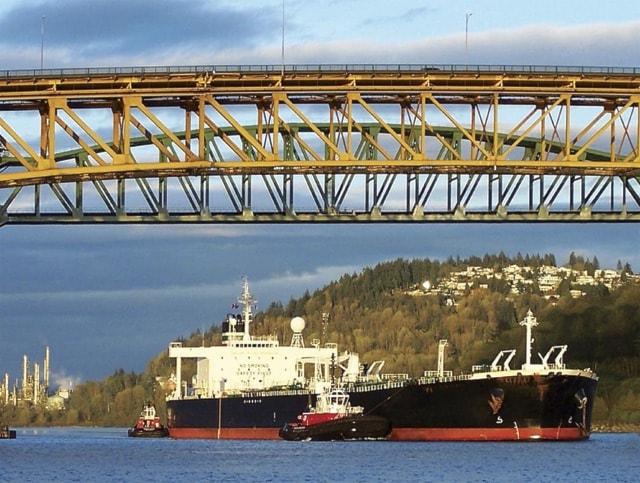Natural Resources Minister Joe Oliver assured a Vancouver business audience Wednesday that the federal government is committed to "world class" oil spill prevention and response on the B.C. coast.
In a speech to the Vancouver Board of Trade, Oliver stopped short of specifically endorsing the 45 recommendations in a new survey of marine and land oil transport safety, but repeated a vow from last summer to make "polluter pays" the law for pipelines in Canada.
"There has never been a serious tanker accident on the West Coast," Oliver said. "Nevertheless, we are committed to building a world-class system to prevent marine accidents. In the unlikely event there is an accident, we need to respond rapidly and comprehensively and make sure the polluter pays, not the taxpayer."
On Tuesday, Oliver and Transport Minister Lisa Raitt by a tanker safety expert panel chaired by Gordon Houston, former president of Port Metro Vancouver and Prince Rupert harbourmaster.
The panel's report calls for adequate funding to the Canadian Coast Guard to make it the lead agency in any oil spill response at sea. Potential polluters and their delegated spill response agencies should be prepared for a "worst case" incident like the Exxon Valdez grounding in Alaska in 1989, the report says.
B.C. Environment Minister Mary Polak said it remains to be seen if Ottawa will take the necessary steps to meet the province's conditions for approving new heavy oil pipelines. A federal review panel is due to issue recommendations by the end of December on whether the Enbridge Northern Gateway proposal for a double pipeline from northern Alberta to Kitimat should be allowed to proceed.
The federal report looks only at current traffic, including crude and other petroleum products. It identifies the south end of Vancouver Island and the adjacent coast, including Vancouver harbour, as being at "very high risk due to the large volumes of vessel traffic and bulk oil movements that occur within close proximity of environmentally sensitive areas."
That is the region where Alaska crude oil tankers enter the Strait of Juan de Fuca to reach Washington state refineries, and the oil tanker exclusion zone ends. Between 30 and 60 tankers a year filled with crude oil or diluted bitumen also sail out from the Kinder Morgan Canada oil terminal at Burnaby through the same waters.
Traffic from Burnaby would increase to about one tanker per day if Kinder Morgan's proposed twinning of its Trans Mountain pipeline from Alberta proceeds. Currently 30 to 60 tankers a year load at the Westridge Terminal in Burnaby.
The tanker exclusion zone, a voluntary agreement between Canada and the U.S., extends 200 nautical miles west from the northern tip of Haida Gwaii to southern Vancouver Island. The federal report rates oil spill risk as "medium" on the northern and southern ends of the exclusion zone, and low in the central portion.



